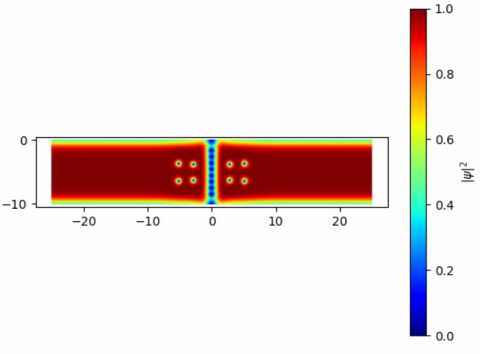New simulations of magnetic vortex entry at grain boundaries
Grain boundary defects in Nb₃Sn SRF cavities may limit the maximum magnetic field they optimally perform in. Using a finite element method, we computationally simulate these defects by mimicking surface roughness and Sn segregation. We find even small defects reduce the maximum magnetic field.
Nb3Sn SRF cavities operate at higher temperatures and theoretically higher magnetic fields than Nb. It is thought that grain boundaries may be limiting the maximum magnetic field. By simulating grain boundaries we bring to light complicated physics that can't be easily measured and may bring insight as to how to design better Nb3Sn SRF cavities.
Higher accelerating fields and lower power loss leads to smaller, less expensive particle accelerators which are used by a wide variety of scientists. Universities with smaller budgets and small campuses could potentially purchase and maintain these smaller particle accelerators. This greatly increases accessibility for scientists that need x-ray or electron beams for their experiments.
Reference:
J. Carlson, A. Pack, M. K. Transtrum, J. Lee, D. N. Seidman, D. B. Liarte, N. Sitaraman, A. Senanian, J. P. Sethna, T. Arias, S. Posen, and M. M. Kelley, “Analysis of Magnetic Vortex Dissipation in Sn-Segregated Boundaries in Nb3Sn SRF Cavities,” Phys. Rev. B, vol. 103, no. 2, p. 024516, Jan. 2021, doi: 10.1103/PhysRevB.103.024516.

